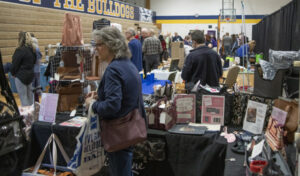By Jennifer Fairfield, owner Garden Mill
(Publisher’s note, this is the second part of a two-part column. Part 1 ran yesterday.)
To Do Outdoors This Month:
Now, and really any time this month, is the best time to prune most trees and shrubs. What makes this the best time? It’s the fact that they are dormant, and pruning trees and shrubs while they are dormant means that there you aren’t likely to introduce disease to your plants via the open wounds that are left when you prune.
Open, seeping wounds attract insects that carry disease from infected plants when you prune during the time that insects are around. Since plants are dormant now, they won’t be seeping, and since it’s too cold outside for pretty much all insects, you lessen your chances of infection to your trees and shrubs by pruning now. Oak trees should only ever be pruned at this time of year, because they are extremely susceptible to oak wilt disease if pruned in warmer months.
Some ornamental trees and shrubs shouldn’t be pruned at this time of year, because doing so will reduce flowering this spring.
A general rule of thumb is to prune trees and shrubs that bloom after the end of June during the winter (now), and those that bloom before the end of June once they have finished blooming. Purdue University’s Extension Service has a fabulous resource with all kinds of easy-to-understand information on pruning including why, when, and how.
If you’d like to learn more about pruning, the University of Michigan’s College of Agriculture and Natural Resources is offering online pruning workshops this month that will “help you better understand the science behind pruning and a bit of the art.” The cost is $40, and the workshops will be recorded and sent to registrants so you can view and review the information again. Learn about the workshops and register to participate here.
If you sometimes have deer or rabbit damage, you might want to treat your vulnerable plants with a repellent, or re-treat if you treated earlier. Food options are slim for these guys at this time of year, so they will be looking for easy pickings, and your landscaping plants can look very good right about now.

For the Birds:
February is National Bird Feeding Month, for a good reason. By this point in winter, natural sources of food are getting scarce, so keeping feeders full can be critical to your birds’ survival.
It’s especially important after a big snowfall (like what we are expecting), since their food sources get covered by the snow.
I try to make sure that my feeders are full leading up to a big snow event so that the birds have the chance to fill up before the snow starts flying. Then, once the snow stops, I will go out and clean the snow off the feeders so the birds have access to the food – searching for food uses up a lot of energy. The Garden Mill is celebrating National Bird Feeding Month with a sale on all bird feeders all month long! Details in-store and on our website.
Keeping bird baths full and thawed is also important now. A heated birdbath or a deicer in your birdbath provides your birds access to a good supply of fresh drinking water. If you’ve read anything online about heated birdbaths being bad for birds because the water sticks to their feathers and then can freeze once they are out of the bath, please don’t let it stop you from helping out your feathered friends.
Birds are pretty smart, and won’t generally dunk their whole bodies into water when the air temperature is dangerously low. Adding rocks to your birdbath, or giving them other perches, will allow them to get water without getting wet. The National Wildlife Federation offers more tips on providing water for birds in all kinds of weather on their website.
If you’re looking for something fun for the whole family, that you can do in your own backyard or in a nearby park, I highly recommend the Great Backyard Bird Count. This year’s count takes place Feb.18-21, and is a fun way to help scientists understand global bird populations. Find out all about it, including how to sign up for an informational webinar being held on Feb. 16 at www.birdcount.org/participate/.
If you want to get out of the house to do your counting, there are great trails in Waterloo State Recreation Area and Watkins Lake State Park and County Preserve that might give you the opportunity to see birds you might not find at home.
Of course, if you do it at home, you can stay in your nice, warm house while counting. The great thing about bird watching is that it’s easy for everyone at every level of ability.










